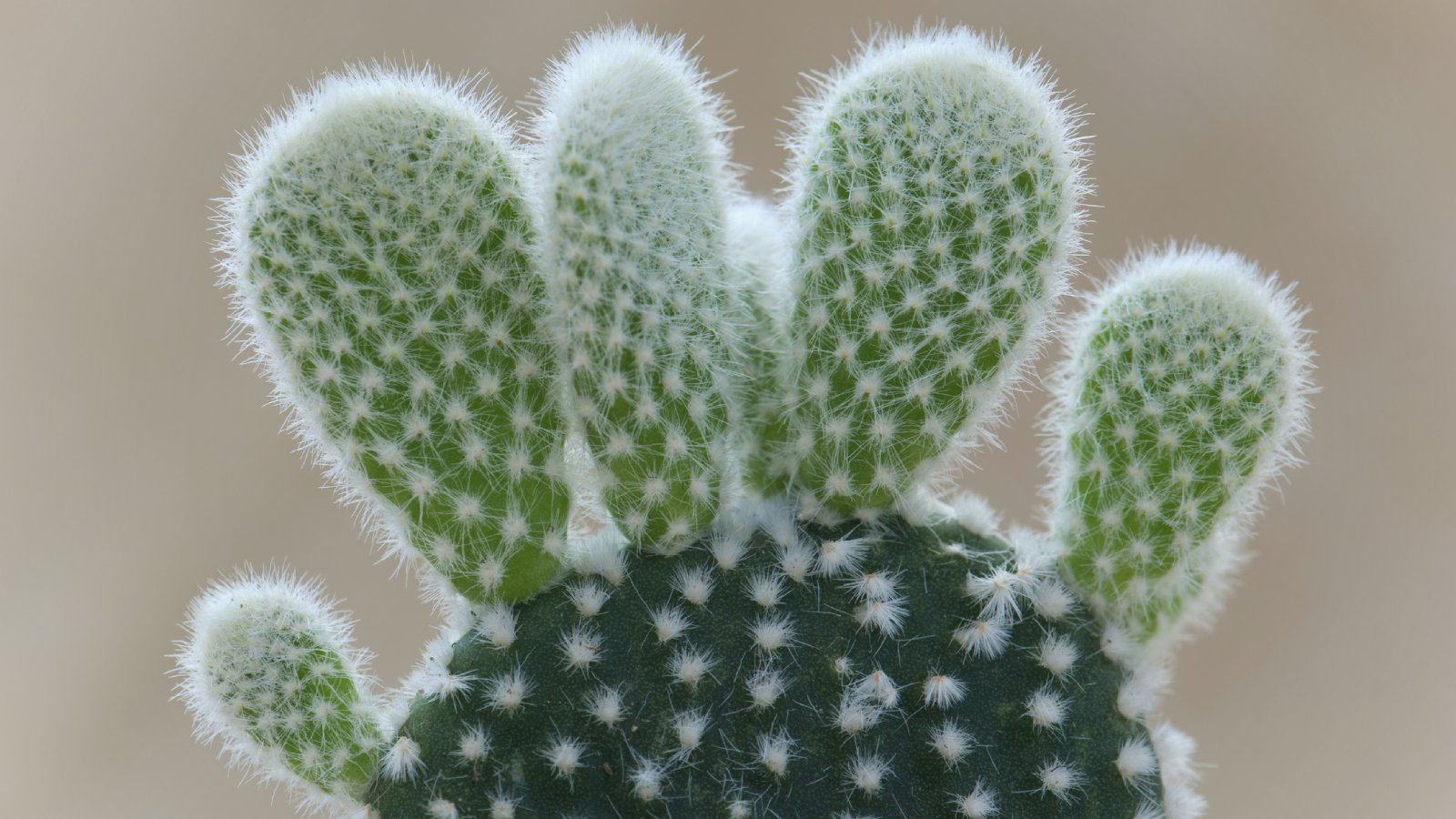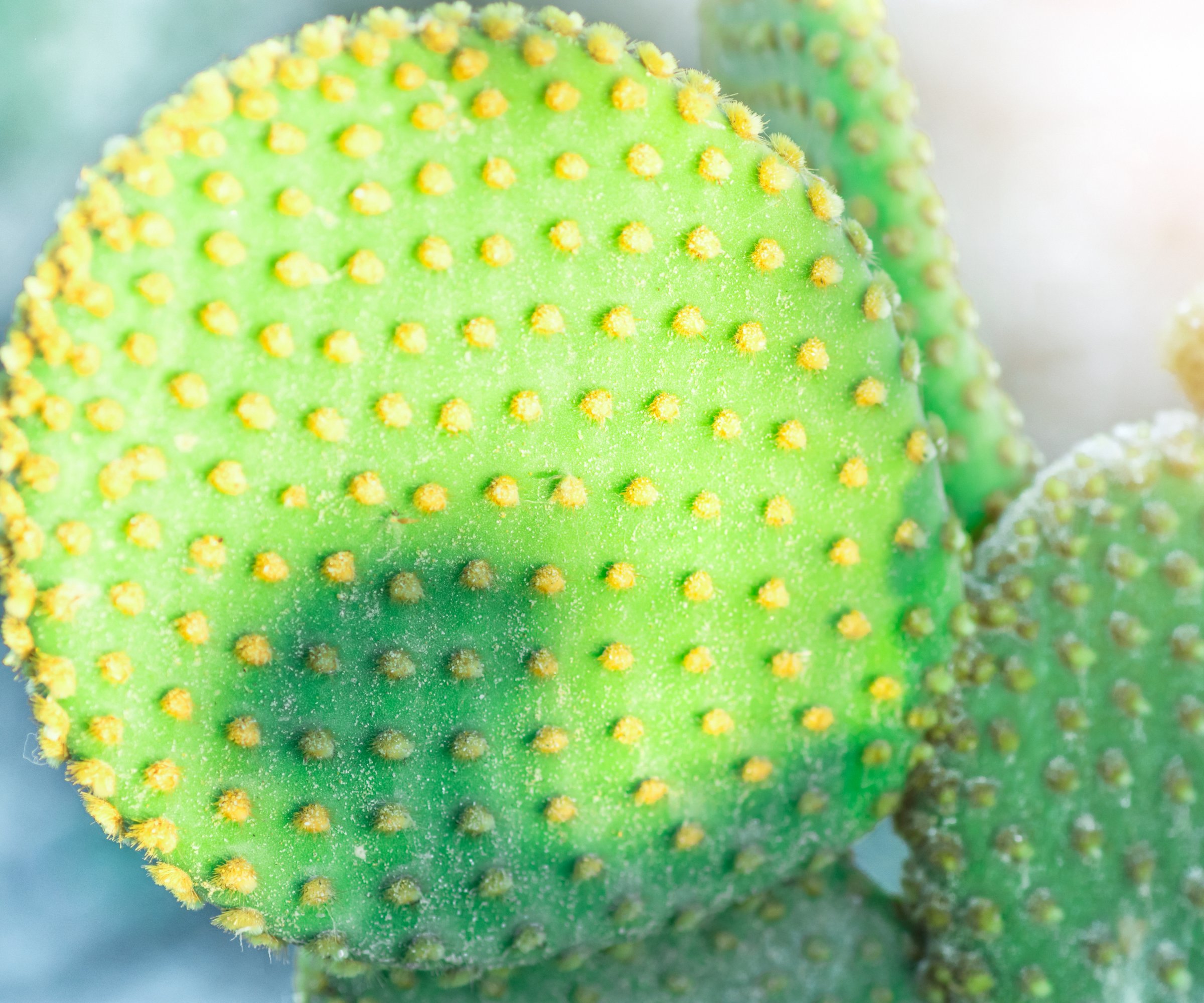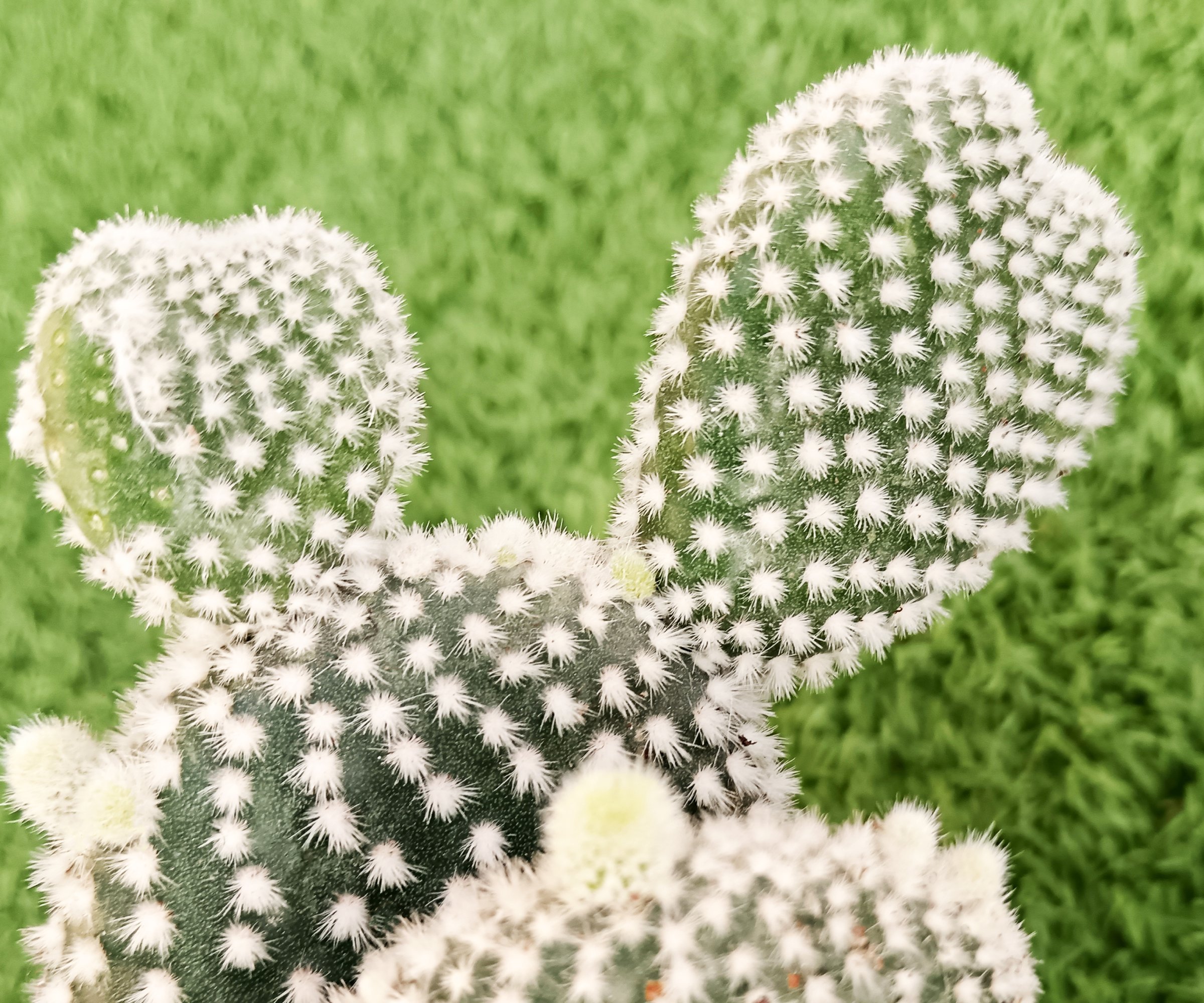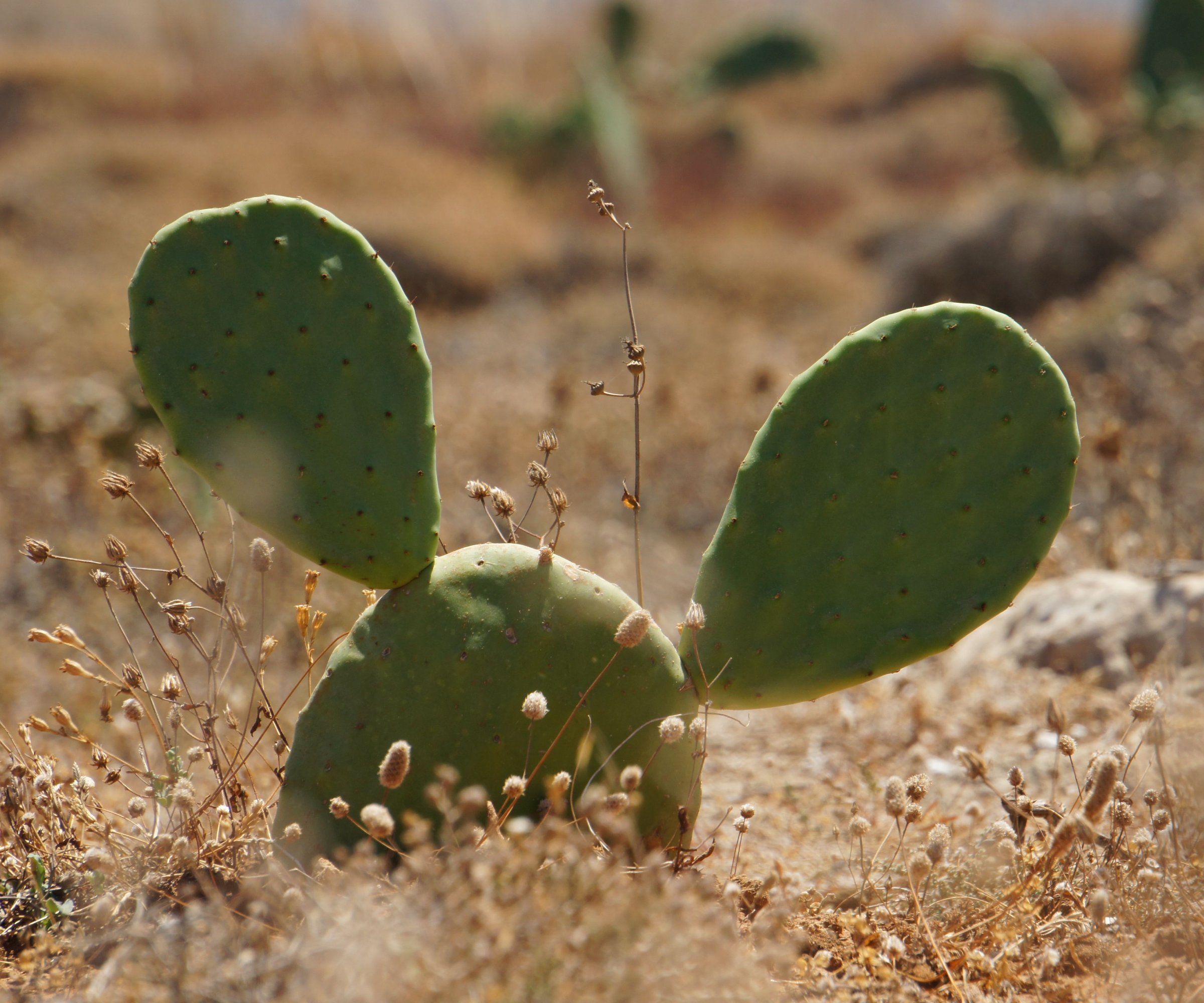Bunny Ear Cactus: Ultimate Care And Growing Guide
Even a beginner can learn how to grow bunny ears cactus and enjoy its charms without a lot of typical houseplant fuss.


Bunny Ear Cactus Quick Facts
Botanical name- Opuntia microdasys
Height- 5 feet ( 1.5 m)
Spread- 5 feet ( 1.5 m)
Sun exposure- full
Soil requirements- well draining, gritty
Hardiness zones- USDA 7-10
When to plant- spring
Cacti have always been my favorite plants. There is such diversity in form, color, size, and bloom, combined with ease of care. Bunny cactus is one that I have had and is a very common selection at nurseries. The bunny ears plant is in the Opuntia genus, a very large group of cacti with the prickly pear cactus being one of the better known varieties. Bunny ear cactus may also be called angel wing cactus, likely due to the shape of its pads. These are fun, little plants that are good cacti for beginners, and will often reward correct care with tropical looking flowers and brilliantly red fruits.
Bunny Ear Cactus Care
Plant owners new to the cacti family can’t go wrong acquiring a bunny ears cactus. The plant is native to Mexico and up into Arizona. It is a desert plant that thrives in arid zones. Bunny ear cactus care requires a carefully mimicked situation for best results.
Light

Since this cacti is used to living in a hot, dry desert, it is also used to bright light for much of the day. Indoor plants should receive at least 6-8 hours of bright light for a happy plant. If the home interior is dim, use a plant bulb to provide supplemental light. Situate the container near a southern or western window that will provide bright light. In the winter, the plant is in dormancy and can withstand slightly less light.
Water
One of the biggest misconceptions about cacti is that they don’t need water. They are adapted to storing water in their stems and pads for use during drought periods. Bunny ears plant is armed with fuzzy looking spines which help prevent moisture from evaporating from the skin. But it will perform best if it is watered frequently enough to prevent withering of the skin. The amount will depend upon the interior conditions. Homes with high humidity should water less than those with low ambient moisture. A good rule of thumb is to allow the soil to dry out before irrigation.
Temperature & Humidity

Bunny ears is a native plant of the Southwestern Desert. It has evolved to be comfortable with high heat situations. It does well in average interior temperatures and may be moved outdoors in the summer. But it needs to be moved inside when temperatures of 50 F. degrees ( 10 C.) arrive. The plant is hardy to United States Department of Agriculture zones 7-10. It will be killed by temperatures of 25 Fahrenheit ( -3.9 C.). As to humidity, the lower the better. High home humidity levels can cause fungal spores to bloom and develop into disease, especially in low light and wet soil conditions.
Soil
In nature, this Opuntia grows in sandy to loam calcareous soils on desert hills. In the home, this soil should be replicated as closely as possible. Purchased cactus potting soil is sufficient. A good homemade version will combine 3 parts of soil with 2 parts sand or other grit. This will provide perfect drainage, since wet roots are a common cause of rot in cacti. The plant will survive in any soil pH.
Fertilizer
Another misconception in cacti growing is that they don’t need fertilizer. Every plant needs food, and makes up much of what it needs through photosynthesis, where it uses the sun to turn carbon and water into plant sugars or carbohydrates. Cacti are mostly self-sufficient but they will enjoy feeding in the early part of the growing season.
Sign up for the Gardening Know How newsletter today and receive a free copy of our e-book "How to Grow Delicious Tomatoes".
Cactus foods are available or mix a dilution by half of houseplant food in the water. Fertilizing cactus plants once per month is the advised practice during the growing season, but I don’t bother, and my cacti are perfectly healthy and grow like weeds. Low nitrogen formulas work best on succulents such as cacti. Homemade additives like coffee grounds, wood ash, or fish tank water ( which I use!) are also useful.
Problems, Pests, & Diseases
The most common issue in cacti growing is moisture. Too much, too little. Too much can cause stem and root rots. Too little and the plant will pucker and can lose stems and pads. Plants that are moved outdoors may get scale, mealybug, and other insect pests. Rub these off with a swab dipped in alcohol. Sunscald can occur when the plant is brought outside for summer. This shows as scaly, hardened, discolored material on the skin. Site it where it will get a little reprieve from noonday sun.
How to Plant a Bunny Ear Cactus
While the spines give rise to the cute name, getting them in your hand is an uncomfortable experience. Make sure you are wearing gloves prior to planting this cactus. I often use kitchen tongs to handle my smaller cacti when re-potting them. Angel wing cactus does not have a robust root system, so use caution when touching the root area. They may be planted in a shallow dish that is just large enough to accommodate the body. Don’t water the plant right after planting it. Wait a few days and then irrigate as usual.
Pruning
Bunny ear cacti don't need pruning, but dead or damaged plant material can be removed at any time. It is self cleaning in many respects, where old pads will wither and fall off. Be very careful when retrieving these old pads, as the spines are still very dangerous. If plant material needs to be cut off, sterilize a sharp knife or pruners to avoid introducing any pathogens and to ensure a clean cut. Cut at the joint where the pad joins the stem or trunk.
Propagation
Another reason I love cacti is their ease of propagation. I have tried seeds before and it takes a long time to get an adult plant. The best way is through vegetative means. ea pad and let it dry out and callus for a few days. Then place it on the surface of cactus soil. It will soon root and should be cared for like the parent plant.
Repotting
Opuntia prefer to be a little crowded so they don’t need to be repotted often. Every 2-3 years, repot to introduce fresh soil. The container size will only need to be increased when the plant is very crowded. Don’t forget to use thick gloves to prevent the slender, tiny spines from breaking into your skin. They are very irritating and difficult to remove.
Overwintering
While bunny ear performs well outside in summer, it needs to come indoors for the winter. In mild areas with little freeze, the plant can remain outside year around. When freezes threaten, move the plant or cover it with frost barrier fabric.
How to Make a Bunny Ear Cactus Flower
I have found it almost impossible to get the right conditions for cacti to flower, with the exception of my Christmas cactus. Bunny ear cactus produces white, yellow, or bright pink flowers in spring, which turn into richly red, oblong fruits. The plant needs to undergo dormancy in winter, a response to cooler temperatures and lower light levels, in order to flower.
Bunny Ear Cactus Varieties

The hybrids of bunny ears have different colored glochids, or the spine clusters. Opuntia microdasys var. albasplina has white glochids, while Opuntia microdasys rufida has rusty red glochids. Opuntia microdasys var. pallida forma cristata has pretty golden yellow glochids.
Frequently Asked Questions
Can You Touch a Bunny Ear Cactus?
Many cacti should come with warning labels and this one is no exception. While some cacti have obvious talon-like spines, bunny ears have soft looking ones. But they are fine and work deeply into the skin, causing burning, itching, and general irritation. Use gloves whenever you have to touch the plant.
What Is the Lifespan of a Bunny Ear Cactus?
With perfect care, you can expect your bunny ear plant to live 3 decades or more. This is not common in the wild, but because we can manipulate growing conditions to the plant’s favor, they can live a very long time. And as the plant gets long in the tooth, it can be propagated through a pad for a whole new generation.

Bonnie Grant is a professional landscaper with a Certification in Urban Gardening. She has been gardening and writing for 15 years. A former professional chef, she has a passion for edible landscaping.